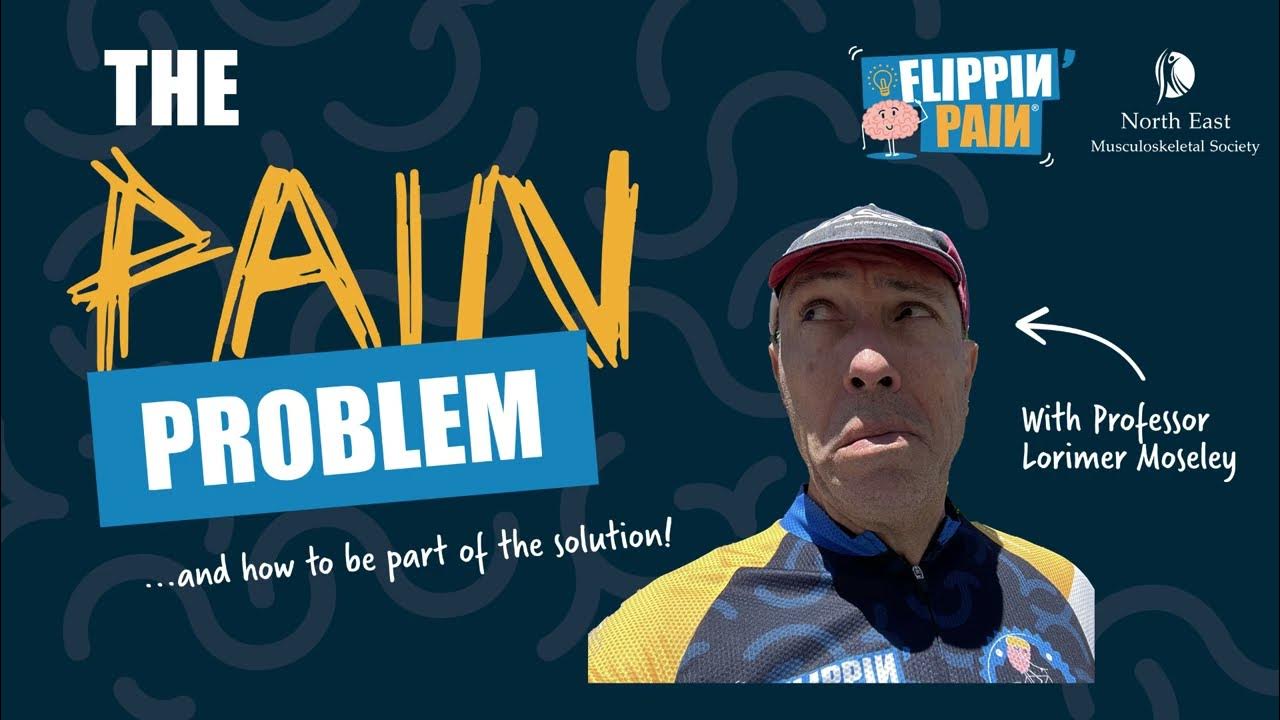Trying Virtual Reality For Chronic Pain and Anxiety
Summary
TLDRThis video explores the innovative use of virtual reality (VR) for managing chronic pain, anxiety, and related conditions. The host, Zach, meets Celene Tien, the founder of Flowly, to test how VR can help alleviate pain by immersing users in calming, interactive environments. Through biofeedback techniques, users learn to control their breathing and heart rate, which can help manage pain and stress. Zach experiences this firsthand by comparing his pain tolerance during the classic ice bucket challenge with and without VR, showcasing the potential of VR in pain management.
Takeaways
- 🌍 Virtual reality (VR) can transport users to different places and is now being explored for treating chronic pain and anxiety.
- 🧠 People suffering from chronic pain are often willing to try anything to find relief, and VR offers a new way to manage pain.
- 🧊 The ice bucket challenge is used to measure pain tolerance with and without the aid of VR.
- 🏝️ VR apps like Flowly provide relaxing environments (e.g., a beach with aurora lights) to make chronic pain management more pleasant and effective.
- 💨 VR uses biofeedback, where users can control their heart rate and pain response through controlled breathing.
- 📊 Biofeedback helps train the body to reduce pain by controlling heart rate and nervous system activity.
- 📱 Flowly's VR app is accessible, as it runs on smartphones, making pain management more convenient and portable.
- 🙍♀️ Chronic pain disproportionately affects women, and women of color are often underdiagnosed or misdiagnosed, highlighting the need for better accessibility and understanding in healthcare.
- 📉 VR can help users reduce their heart and breathing rates by 15%, teaching techniques for pain and anxiety management even outside of VR sessions.
- 🎮 While VR is not a cure-all, it is a valuable tool in a broader pain management toolkit, giving users control over their own health management.
Q & A
What is the primary focus of the video?
-The video focuses on how virtual reality (VR) is being used as a tool to help manage chronic pain, anxiety, and other mental health conditions.
What experiment does Zach participate in during the video?
-Zach participates in an experiment involving the ice bucket challenge, where he tests how long he can keep his hand in ice water. He later tries it again while using VR to see if it helps him withstand the pain for longer.
Who is Celene Tien, and what is her role in the video?
-Celene Tien is the founder of Flowly, a VR app designed to help manage chronic pain and anxiety. She explains how the app works and guides Zach through the experiment.
How does virtual reality help with chronic pain according to Celene Tien?
-Virtual reality helps by using biofeedback techniques, where users can regulate their heart rate and breathing. This reduces the perception of pain by shifting focus away from the pain and immersing users in a relaxing environment.
What is biofeedback, and how is it used in the VR treatment?
-Biofeedback is a technique that teaches users to control physiological functions like heart rate and breathing. In the VR treatment, users follow breathing guides and monitor their heart rate in real-time to help manage pain and anxiety.
What specific technologies are used in the VR setup?
-The VR setup uses a smartphone-based VR headset, a respiration sensor, a skin conductance sensor, and a heart rate sensor to provide biofeedback. The user’s phone powers the VR experience.
How does VR distract from acute pain during the ice bucket challenge?
-VR helps by engaging the brain in a different activity, such as interacting in a virtual world, which distracts from the physical pain. This effect is explained by the gate control theory, which suggests that pain perception can be altered by redirecting attention.
What improvement did Zach experience after using VR during the ice bucket challenge?
-Zach was able to keep his hand in the ice bucket for 41 seconds during the VR session, compared to 30 seconds in the first attempt without VR. This was a 33% improvement.
How does Flowly’s VR app help with mental health conditions like anxiety and depression?
-Flowly's VR app uses immersive environments and biofeedback to help users manage anxiety and depression by calming the nervous system and improving emotional regulation through breathing and heart rate control.
What demographic is most affected by chronic pain, according to Celene Tien?
-Celene explains that the majority of chronic pain patients are women, particularly between the ages of 30 and 50. Women, especially women of color, are often underdiagnosed or misdiagnosed, leading to prolonged suffering.
Outlines

Dieser Bereich ist nur für Premium-Benutzer verfügbar. Bitte führen Sie ein Upgrade durch, um auf diesen Abschnitt zuzugreifen.
Upgrade durchführenMindmap

Dieser Bereich ist nur für Premium-Benutzer verfügbar. Bitte führen Sie ein Upgrade durch, um auf diesen Abschnitt zuzugreifen.
Upgrade durchführenKeywords

Dieser Bereich ist nur für Premium-Benutzer verfügbar. Bitte führen Sie ein Upgrade durch, um auf diesen Abschnitt zuzugreifen.
Upgrade durchführenHighlights

Dieser Bereich ist nur für Premium-Benutzer verfügbar. Bitte führen Sie ein Upgrade durch, um auf diesen Abschnitt zuzugreifen.
Upgrade durchführenTranscripts

Dieser Bereich ist nur für Premium-Benutzer verfügbar. Bitte führen Sie ein Upgrade durch, um auf diesen Abschnitt zuzugreifen.
Upgrade durchführenWeitere ähnliche Videos ansehen

Can Virtual Reality Help Fight the Opioid Crisis?

The Pain Problem...and how to be a part of the solution!

Is Excess Brain Histamine The Cause of Your Symptoms?

Sanal Gerçeklikte 2 Gün Geçirdim!

The Rise Of Technology-Augmented Reality(AR), Virtual Reality(VR) And Mixed Reality(MR) |Simplilearn

Het nieuwe virtual reality centrum voor hartchirurgie
5.0 / 5 (0 votes)
